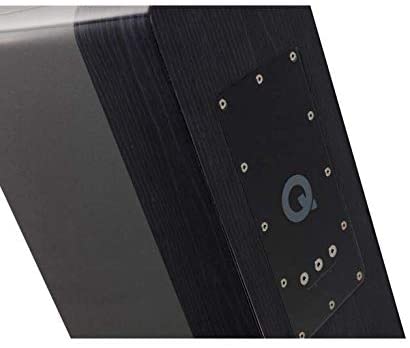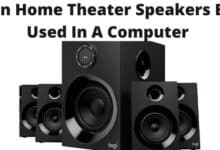It is time to end this technological age long argument. Yes, we know it’s been going on for a while, are car speakers better than home speakers? Well you have to be the judge of that when you go through this article.
We live in a world surrounded by speakers. There are home theater speakers, car speakers, not to mention speakers on your phones, televisions, and even doorbells.
You might be wondering if all of these speakers are the same and if they are interchangeable. But even though speakers all serve the same general purpose, the environment in which you use them differs significantly.
While car and home speaker setups generally include the same equipment such as amplifiers, subwoofers, tweeters, and so forth, the components differ significantly. The most significant differences between car and home speakers are in the impedance, design, and aesthetic.
Table of Contents
Car Speakers VS Home Speakers
Tabular Comparison between Car Audio and Home Audio:
| Car Audio | Home Audio | |
| Description | Is used to describe sound systems fitted to an automobile or other vehicle. Most commonly the ‘stock’ system, or OEM system, as well as the equipment to replace, upgrade, or expand the stock system. | Refers to audio electronics used in home such as shelf stereos and surround sound receivers. |
| Size | Smaller equipment that fits into doors and trunks. | Larger equipment requiring floor or storage space. |
| Design | Car speakers are typically sold as raw drivers with a separate woofer and tweeter. | Home speakers encase these components in cabinets or boxes. |
| Cabinets/Boxes | Car speakers require their own box. May or may not come with their own box. | Home speakers come with a custom tested box. |
| Magnetically Shielded | Car speakers may or may not be magnetically shielded. | Home speakers may already be magnetically shielded. |
| Environment Protection | Some type of weatherproofing from sun and moisture. | Usually do not come with environmental protection as they are designed for the indoors. |
| Impedance | 4 ohm speakers are ideal as car amplifiers are typically low-voltage, high-amperage designs. | 8 ohm speakers are typical, however High end, esoteric, larger home speakers can be as low as 4 ohms. |
Some Other Key Differences Between Car Speaker VS Home Speakers Are:
- The system in your car is going to be subject to harsh environmental factors.
- The power source in your car is very different than the power source in your home.
- The speakers in your car need to fill significantly less space than the ones in your home.
The reasons behind these differences are not always obvious. It can be helpful to take a closer look at each to understand why they exist.
Impedance
The most significant difference between car speaker and home theater speakers is the impedance rating. The impedance of the speaker refers to the electrical load a speaker places on the amplifier.
More specifically, it is the measure of resistance the speaker produces against the current from the amplifier.
When you measure resistance or impedance, you measure it in ‘ohms.’’ The most common analogy to explain impedance is to compare it to running water.
The more resistance – or the higher the ohms – the less water – or electrical current – is able to pass through. If the resistance is too high, the current will build-up and the amplifier will fry out.
Ohms Differences
Car speakers are likely to have 4 ohms of impedance, whereas your home theater speakers will have 8 ohms. It is extremely rare for car speakers to have more than 4 ohms of resistance. There are a couple of reasons for this.
A car battery typically produces between 12 and 14 volts, compared to a home outlet which delivers around 110 volts. Because of this, the amplifier in your car is usually going to be low-voltage and high-amperage.
As you might expect, the amplifiers in your home will likely be the exact opposite – low-amperage and high-voltage.
Since your car has a lower voltage, the speakers will need less resistance to get the amount of power necessary. An amplifier that can deliver 50 watts of power at 8 ohms will be able to deliver 75 or 100 watts of power at 4 ohms because the current is less restricted. Because of this, most companies design car amplifiers explicitly for 4-ohm speakers.
As you might expect, the opposite reasoning is true of your home speakers. Since your home outlets offer a much higher voltage, it needs a smaller percentage of that to be passed along to the speaker and is likely to have a higher impedance rating.
There are 4-ohm home theater speakers out there, but it is rare for car speakers to have a higher impedance than 4 ohms.
Subwoofer Differences
The most obvious difference between car subwoofers and the ones used for home theaters is the size. Not only does the cabinet size of the speaker make room for a more powerful subwoofer, but it is also necessary if a subwoofer is going to be active.
An active subwoofer is a subwoofer that has an internal amplifier built in. It does not need to rely on the stereo amplifier for power, and therefore has a lot of flexibility and can be a lot more powerful.
Active subwoofers, since they have their own amplifier, also need their own power source. The easiest way to tell if your home theater subwoofer is active is by determining if it needs to be plugged into a power outlet.
Passive subwoofers only need to be plugged into the amp. Active subwoofers require a wall outlet.
As you might imagine, the subwoofer in your car is going to be passive – unless you really put the effort forth for something active.
When you can hear the bass coming from a passing car 3 blocks away, you can be reasonably sure they’ve installed an active subwoofer.
The size difference also creates a difference in efficiency between the two subwoofers. The subwoofer in your home is designed to move a lot of air and produce sound for a large area. The subwoofer in your car is designed to fill the vehicle cabin with sound, which is a much smaller space.
Design of Car and Home Speakers
Manufacturers design Car speakers for an entirely different environment than home speakers – in more ways than one. The inside of your car goes through a lot – temperature changes, extreme freezing, high humidity, the heat of the sun.
Your home theater speakers will obviously live in your home. Since your home is likely mild and climate controlled, they don’t have to be as rugged.
This allows for more flexibility in aesthetic design and other features. These design choices won’t put the speaker at risk of failure due to exposure to the elements
When you look at car speakers and home speakers you will notice they are distinctly different. If you were to remove the home speakers from their cabinets however, they might look somewhat similar.
Car speakers are usually, one way or another, built directly into the car itself. This means that there is no cabinet for car speakers, just the bare features with a grill or cover. There are of course exceptions to this, mainly when building powerful speaker systems into the trunk of a car.
Car audios describe sound systems fitted to an automobile or other vehicle. They are most commonly the ‘stock’ system, or OEM system, as well as the equipment to replace, upgrade or expand the stock system.
Home audio, on the other hand, refers to audio electronics used in the home such as shelf stereos and surround sound receivers.
Everyone listens to music. Everyone has a select list of songs that they love to blare on the speakers. These songs are blared in one of two places, either at the home or in the car.
Even though the song blaring through the speakers is probably the same, the speakers themselves will be quite different.
Car audios, as the name suggests, is audio equipment that is used in cars. These sound systems are generally provided by the car makers as part of the cars.
However, there are various other sound systems available on the market that aim to replace, upgrade, or expand the car’s stock sound system.
Standard car audio systems generally include various equipment such as a head unit, speakers, amplifiers, subwoofers, capacitors, and damping.
Home audio, on the other hand, generally refers to audio electronics used in home. These may be as small as a pair of standard speakers, to shelf stereos and surround sound home audio systems.
While home audio does include a set of speakers, amplifiers, subwoofers, capacitors, etc., they are generally encased in cabinets or boxes and are usually bigger and more powerful than car audio systems.
Conclusion
Car speakers and home speakers are functionally the same, with specific design differences to suit them for different uses.




